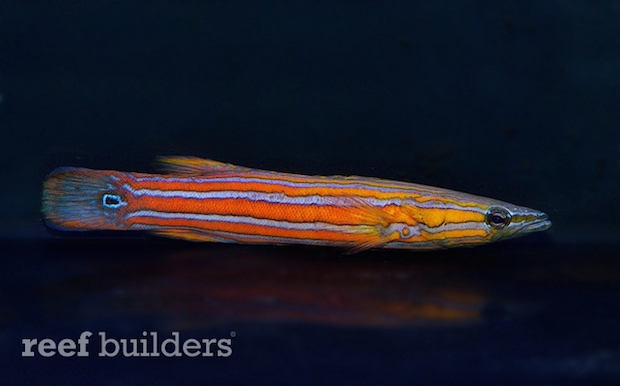Rainfordia opercularis made a meteoric appearance a few years ago and just as suddenly as it appeared, it vanished without a trace. We helmed the species as fish of the year back in 2011 and since then we have covered numerous articles about it. Kevin Kohen has a pair living in his office tank that we got to see this year, and boy does this fish still deliver in terms of sheer awesomeness and colour. Just when we thought the Rainfordia sensation has died down, a beautiful pair appeared at Red Heart King of Hong Kong just recently to melt our hearts all over again.

Rainfordia opercularis is a highly cryptic and extremely secretive species that lives in the reef catacombs out of sight of conventional divers. In the aquarium, the same behaviour can be seen and they rarely if ever show their whole bodies. In a tank system replete with caves, Rainfordia opercularis will only make short appearances now and then especially during feeding time. This is perhaps the best way to keep them so as to emulate their surroundings in nature.
Its common name of the flathead perch is coined by its distinctively flattened head, which is highly unusual. Rainfordia is a monotypic genus with only one species that is found around the Australian coast. The sexy orange and blue horizontal pyjama stripes is highly alluring, and draws attention and focus all along the length of the body. The stripes culminate in a hypnotising eye spot at the base of the tail that is not only eye catching, but extremely mysterious if you ask me.
Although it has been a few years since the debut of this fish, the price has not fallen and Rainfordia is still an expensive fish to own raking up a couple of grand for a pair. However their easy going nature and gorgeous design will definitely not go unnoticed for long and we’re sure the pair will be sold soon, if not already. Be warned though, that small shrimp and fish are a no no. These fish have a large mouth and anything small enough to fit in it will definitely be on the menu.



